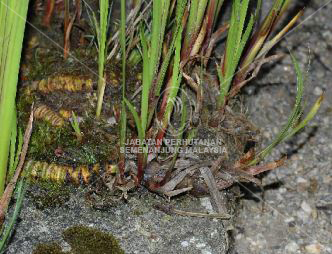Jerangau
INTRODUCTION
Jerangau has a very long history of medicinal use and is widely employed in modern herbal medicine as an aromatic stimulant and a mild tonic . It has been used in Asia for at least the last 2 millennia by the Chinese and Indians. In Malaysia, it is cultivated in backyard gardens of both the Malays and the Indians, where it is mainly used externally as a poultice or as a lotion.
PLANT DESCRIPTION
Jerangau root is a vigorous perennial herb growing up to a height of 1.0 m. It composes of many long, slender, grasslike leaves rising directly from a rhizomes. The leaves are equitantly arranged, simple, glabrous, green with an entire, linear leaf blade. The leaf venation is parallel and its insertion sheating. The leaf is aromatic. The rhizome is very fragrant, containing an aromatic volatile oil. In section, the rhizome is white in color and very fibrous.
PLANT HABIT
This plant inhabits wet areas like streams and around pond and lakes.
PLANT PARTS USED
Rhizomes
USES IN TRADITIONAL MEDICINE
Jerangau is reported to be used for their antibacterial, anticonvulsant, antiseptic and emetic. The rhizome is used as a remedy for flatulence, colic, dyspepsia and intermittent fevers, rheumatism, nerve diseases, bowel complaints, dysentery in children, bronchial infection and athma. Calamus oil is used for preparation of aromatic cordials, liquors, flavoring beer and making perfumes.







